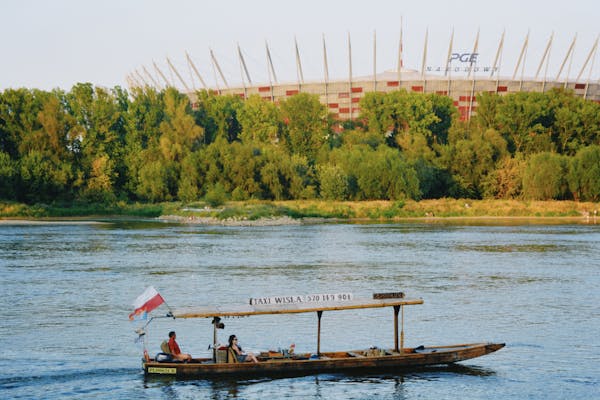Poland’s vibrant tourism industry is facing significant challenges as the country experiences historically low river levels. Once bustling waterways that served as scenic attractions and vital transport routes are now reduced to mere trickles, casting a shadow over the country’s thriving tourism sector.
The Impact of Low River Levels
The Vistula, Oder, and Warta rivers, among Poland’s most prominent waterways, have been central to the nation’s tourism appeal. From picturesque river cruises to charming waterfront strolls, these rivers have long been a draw for both domestic and international visitors. However, the recent record low river levels have disrupted these activities, leading to a noticeable decline in tourist numbers.
River cruises, a popular choice for exploring Poland’s scenic landscapes and historic sites, have been severely affected. Many tour operators have had to cancel or reschedule trips due to insufficient water depths, leading to a direct loss of revenue and a reduction in visitor satisfaction. The decrease in river traffic also impacts local businesses that cater to tourists, from riverside restaurants to souvenir shops.
Contributing Factors
The current crisis stems from a combination of factors, including an extended period of drought and shifting climate patterns. Poland has experienced unusually low rainfall this year, leading to decreased river flow and critically low water levels. This environmental issue is compounded by the effects of climate change, which are causing more frequent and severe weather anomalies.
The lack of water not only affects tourism but also has broader implications for local ecosystems and agriculture. Rivers play a crucial role in maintaining ecological balance and supporting various forms of wildlife, and their diminished flow disrupts these natural systems.
Economic and Social Implications
The economic ramifications of the low river levels are substantial. The tourism sector, which significantly contributes to Poland’s GDP and employment, is facing a downturn. Local economies that rely on river-based tourism are seeing reduced income and job losses. Additionally, the broader economic impact includes potential declines in related sectors such as hospitality and transportation.
Socially, the diminished river levels affect community life. Rivers have historically been central to Polish cultural events, festivals, and recreational activities. Their reduced presence alters local traditions and can dampen community spirit, which is often linked to these vibrant cultural and recreational practices.
Responses and Solutions
In response to the crisis, both government and private sectors are taking steps to mitigate the impact. Local authorities and environmental organizations are advocating for improved water management strategies and increased investment in infrastructure to support river conservation and restoration. Efforts are being made to address the immediate effects of the drought and to plan for long-term resilience against future environmental challenges.
Tourism operators are adapting by diversifying their offerings and exploring alternative attractions and routes. Some are focusing on promoting other aspects of Polish culture and history, while others are investing in new experiences that do not rely on river access.
Looking Ahead
While the current situation presents a significant challenge, it also underscores the need for sustainable practices and climate adaptation strategies. Poland’s experience highlights the interconnectedness of environmental health and economic vitality, emphasizing the importance of addressing climate change and managing natural resources responsibly.
As the country navigates through this period of adversity, there is hope that concerted efforts will lead to recovery and resilience. By adapting to changing conditions and investing in sustainable solutions, Poland can work towards restoring its rivers and revitalizing its tourism industry.
In summary, Poland’s tourism sector is grappling with the effects of record low river levels, which have disrupted key attractions and economic activities. The crisis reveals broader environmental and economic challenges, prompting both immediate responses and long-term strategies to address the impact and build resilience for the future.



